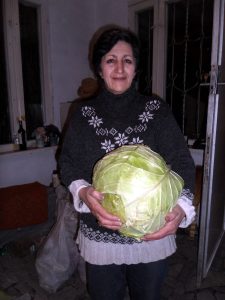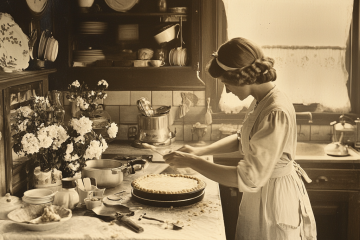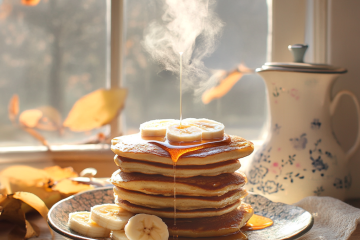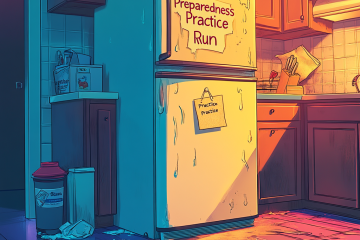
Massive Cabbage from the Mittleider Method
Will your gardening skills today be enough for your survival tomorrow?
Perhaps not, but that can be easily remedied!
There’s no denying it, when it comes to our food supply in this nation, we are in deep trouble. I won’t get into all of the reasons why I say that, as I believe it would be better in a different article, but I will say that I’m sufficiently convinced of this potential
There’s a problem that I believe I have to GROW as much of my food as I possibly can and then eat it or preserve it for future use. I don’t know about you but I feel a sense of urgency to not only grow as much food as I can, but to also stock up on what food I can get my hands on that hasn’t yet been converted into some Frankensteinian version of food. It may only be a few syllables, but I’m Frankenseinian food is a nightmare for me and for you–in my opinion. I’m tired of not knowing where my food was produced, HOW it was produced, and what chemicals were used. Anyway, as such I’ve felt a sense of urgency in growing, preserving, and ensuring that I have all of the supplies, seeds, and knowledge that I need so that I can grow and assure myself healthy foods in the future. To this end I’ve been purchasing heirloom, open-pollinated seeds over the past year like a madwoman, paying close attention to every single gram of seed and studying every single species I’ve purchased as well as the various idiosyncrasies pertinent to each type of seed that I intend to grow. (When my Baker’s Creek catalog arrives every January, I’m in for sitting down for a couple of hours just do delve into the glorious pictures and fantasize about all of the delicious possibilities!)
First Step: Strategic Seed Selection
Rather than just selecting seeds based on my appetites and the ingredients I need for my favorite dishes, I’ve also meticulously selected each seed based on a criterion that I believe will strengthen my security and survival in a not-too-distant time. I’ve deliberately selected high-value, rare, uncommon heirloom seeds as those which I believe will be in high demand at a future time, which I can grow and rely upon to take care of my family and perhaps even my community both nutritionally and economically. In other words, I can grow tomatoes and offer them at a farmers market, but I can also grow big, beautiful,
The meaty orange and purple and striped tomatoes that will be in big demand by foodies, chefs, and those who want something a little more “special.” I’ve been watching what the health food stores charge for the unique produce such as the small scalloped squash and the golden beets and the beautifully mottled brown and orange tomatoes. Those kinds of items are going for $5 to $6 a pound. So this kind of stratagem can earn an income with the produce OR just selling the seeds outright someday. By selecting my seeds this way, I not only am in position to provide food for our needs, but also income today and tomorrow under more trying circumstances. I’m positive we’re nearing a time in which it will be very difficult to find heirloom, open-pollinated, non-gmo seeds. I look at my seeds much like many view their gold or silver collections. The only thing is that none of my seed assets will decrease in value in a crisis.
Second Step: Foolproof Growing Method
Being a woman of priorities, I understand that these seeds are useless to me if I can’t convert them into the promised fruits of my labors. But the problem with that is that up until 3 years ago, I had never planted my own garden. I realize that might sound a bit loony coming from “The Preparedness Pro”, but I moved around SO much and have been such a “city girl”, that gardening was never on my radar—not to mention the fact that I’ve managed to kill more than a few “foolproof” houseplants along the way. As such it might surprise you to hear that it is with no small amount of confidence that I share with you today that I’m absolutely certain that I can accomplish these goals, and that I can likewise direct you to the same level of certainty regardless of your previous gardening background. I’ve discovered a truly foolproof gardening method that will turn a novice into a blue ribbon gardener; but just as importantly, a method that will convert a Certified Master Gardener into a gardener who will have no choice but to re-learn some of the principles he’s been taught as he discovers the power and potential which THIS simple gardening method holds. I’m referring to the Mittleider Gardening Method, of course, and I’m taking the time in this series to provide greater detail in using this method, as well as making good on some promises to take the time to answer several of the questions that I’ve received ever since my first hastily written article that came out on the topic about 2 weeks ago.
What’s the TEN Criteria for a PERFECT Gardening Method?
First of all, remember that I am a complete gardening novice. I’ve heard, read, watched, and discussed dozens of different gardening methods out there, but none of them met my logical criteria. I don’t have any “flesh in the game” so to speak when it comes to deciding on a particular gardening method. I DO feel a responsibility though to do the studying necessary to find one that I can confidently submit to our readers as being the PERFECT gardening method regardless of where they live in the world. As I researched all of the various methods out there, I felt that if a gardening method was going to be reliable in a time of “crisis” or “survival time” then it had to be reliable and universal in its application NOW with the following criteria:
1. Simple: Simple to set up, simple to maintain, simple to teach others how to implement.
2. Universally applicable: It needs to be realistic to be implemented in S. Africa, the Philippines, Norway, and anywhere else that good food is needed. But it also needs to be applicable in areas where there’s limited water resources and where there might be poor and nutritionally deficient soil.
3. Preparedness Oriented: I need the method to be realistic enough that I can gather what I need now so that I can still have what I need ten years from now when growing my own garden might mean the difference between life and death. I need whatever I stock up on now to implement the method to still be usable 10 years from now. I expect nothing less from my shelf-stable food products so I need the same kind of reality from my plans to grow food too.
4. Creates nutritional food via all-natural methods: if the nutrients aren’t in the soil, then they aren’t in the food. It’s been a LONG time now since we’ve had the necessary nutrients in our soil that we really need. In fact, as long ago as the early 1980’s Green Giant farms’ soil was tested and found to be woefully inadequate to provide the nutrients in the produce they grew. In other words, the nutrients that you’re expecting to be in your produce isn’t there unless you make sure it’s in your soil. The method that I was looking for HAD to have a solution for this BUT it MUST be an ALL-NATURAL solution. No chemicals or synthetics for me. The body can tell the difference and will reject the synthetic garbage.
5. Easy on the soil: I don’t want a method that’s so intense that I need to give my soil time to rest. I don’t believe that I have that kind of time, do you? And I know that I don’t have that much soil to use as it is. (Which is why I had to have these planters built to go on my patio–because I’m out of yard space that gets sufficient sunlight!)
 Hand made garden boxes. 5 boxes made for only $300 will be the perfect home for my herbs, strawberries and greens!
Hand made garden boxes. 5 boxes made for only $300 will be the perfect home for my herbs, strawberries and greens!
6. Maximum yield for the space: I need every square inch of my gardening space to produce the maximum amount of food. I’m sure there are apartment and city dwellers who might have no more than a couple of pots on their balcony that they can use to grow food. Space is the ultimate premium when it comes to gardening.
7. Inexpensive: In order for this method to be viable for me, it cannot demand that I spend money on special chemicals, fertilizers, equipment, and especially NOT dirt!! I can’t believe how much money people are spending to implement the hydroponics, or Back to Eden Gardening or some of these other foo-foo methods! Furthermore, I want to be able to spend the money once to set it up and have that set up last me a long, long time!
8. Grow FOOD FAST: I can’t believe that some of the methods actually require years of nurturing the soil in order to get good food! Again, I dont’ have time for that. In fact, in my fantasy of fantasies, I’d love to find a way to grow quality food a little faster than “the norm.” Or at the very least, when I see the number on the low end of expected germination time, I’d like to know that I can at least achieve THAT number as opposed to the higher end of the spectrum. I’d love to be able to get more than one crop of peas and corn and beans planted each summer–but perhaps that’s too much to ask. (Spoiler alert: it’s NOT! The Mittleider Gardening Method actually does make it possible to grow more than one crop of several of my favorite foods.)
9. Easy to maintain: I don’t want to have to work so hard to get the garden going only to feel like I have to work just as hard every week to keep it going. Come on! I’m not Superwoman. I’ve got to have some energy left in my day so that I can PREPARE and PRESERVE what I grow after all, right?
Last but not least…
10: Require a minimal amount of water: While I know that I CAN create an effective aquaponics scenario, I don’t believe that that is the norm for most people living all over the world. Such a method requires a LOT of water and a lot of equipment to filter that water and that means a lot of electricity. Sorry, but that’s not a part of my “off the grid” plan. In fact, my research as of late is showing that there’s a DRASTIC DECREASE in the amount of available water. I have reason to believe that it was possible that I could find a method that cut the water needs down dramatically by as much as 50% or more. I don’t want to HAVE to have abundant rainfall in order to grow, or unlimited water supply needed for a sprinkler system.
Well, there you have it. My TEN criteria that I set out to find out if there was a gardening method that matched what I felt I needed. And the good news is that yes, there is. The Mittleider method not only met all of this criteria, but it exceeds it and provides even more assets that I hadn’t considered. So, now that we have the criteria mapped out, let’s move forward and see what kinds of principles we can apply from the Mittleider Gardening Method to make this a reality.
Tune in tomorrow as I begin to address each of these criteria AND provide you some of the actual principles in using the Mittleider Gardening Method that you can implement right away.
How to Get the COMPLETE Mittleider Gardening Course–FREE
Until tomorrow…





21 Comments
Audrey · May 30, 2013 at 1:05 am
Don’t sell the worms short. Worms in the soil indicate that the soil is good, and they are making it even better. You should read about them. It is fascinating the natural role they play in our food supply.
Kellene Bishop · May 30, 2013 at 1:36 am
Audrey, worms in the soil play a role, but they are not exclusive to that role being carried out. As such, I’m not interested in how many worms are in my soil, only that the end result of my soil is as it should be.
John · May 30, 2013 at 3:23 am
I use cinder blocks to house my garden. It’s amazing the different designs you can make with cinder blocks. If you use Google Image and type in the key words “cinder block garden” you will come up with hundreds of images of unique garden designs using cinder blocks. I like cinder blocks because they never rot like wood does, and you can always reshuffle them into a different design the next growing season unlike wood.
Dava Serbantes · May 30, 2013 at 10:22 am
Got it! I really wanted it from your last article but couldn’t swing it. This deal is just TOO GOOD to let pass by! Thank you! Can’t wait to learn more! Unfortunately, I am no able to get the garden in until next spring. I’m a trucker with my husband and am quitting to homestead and start a small organic, GMO free egg/chicken business, Dec 31st. But gotta earn the money til then!
Becky · May 30, 2013 at 4:17 pm
Kellene:
Where are you purchasing your open pollen seeds? Everyone speaks about heirloom seeds but not the OP seeds. In fact until you mention them I had totally forgot about them.
Kellene Bishop · May 30, 2013 at 5:54 pm
They are a part of the Five Star Preparedness pack, Becky. Plus Seed Savers Exchange and Baker Creek have them.
Susan · May 30, 2013 at 8:41 pm
Kelene
I just ordered the Group Buy. Hope this helps me develop a green thumb! You and Scott are doing so much to help all of us, it’s amazing. How can we ever thank you enough? Love and blessings to you both.
Kellene Bishop · May 30, 2013 at 11:54 pm
We’ll learn as we go, Susan. I am personally grateful for all of the great teachers out there like Jacob Mittleider. I’d still be killing plants if it wasn’t for him and Jim Kennard being so patient with me.
Donnella · May 31, 2013 at 12:21 am
Kellene, how are you irrigating the grow boxes. I’m also concerned about the soil temp during the hot summer with the boxes above ground. This would work so well for me if I can overcome those two concerns.
Kellene Bishop · May 31, 2013 at 4:49 am
That’s simple. I’m obviously allowing water drainage out the bottom of them. There’s a thick opening below the 2 x 4 you see in the bottom of the box. So I’m lining that with landscaping cloth. As for the temperature, instead of soil I’m using 75% non-chemical sawdust and 25% sand. The sand stays cool longer in the heat and warm longer in the cold.
Donnella · May 31, 2013 at 11:36 pm
Sand I have plenty of – I live in the Sand Hils. Are you using the PVC pipe with holes to water or watering by hand?
Sherry · May 31, 2013 at 2:00 am
Thanks! This year we have 6 large plastic containers with handles we purchased them at walmart for less than $7.00 each and filled with organic rich potting soil and planted 3 strawberrie plants in each one. Last year in 5 gallon buckets we had tomatoes and did plant tomatoes again this year. But last year my tomatoes all had a blackish spot on the bottom of nearly all the tomatoes I read its from a lack of calcium in the soil so I gave them some milk when we planted them this year also. Hopefully that solves the problem. Happy gardening to everyone.
Kristine · May 31, 2013 at 2:42 am
Great article with one exception. We are now converting our gardens; beds and larger areas to Back to Eden method and it isn’t costing us 1 cent. All the wood chips, not bark, we can use is delivered to our house for FREE…as much as we need. I know that this is a easily accessible item here in Washington state, but there are others throughout the country doing with no expense either.
The reason for our conversion is easier to maintain and care for, less weeding and great production! You can see our progress on our blog;
[redacted for spam]
We have tried and been successful at different methods, especially bio-intensive & square foot, but have also included some of the Mittleider techniques. We garden for the 3 P’s, production, preparedness and pleasure. Plus fabulous food 🙂
Kellene Bishop · May 31, 2013 at 4:46 am
Did you know that the bark and wood from the trees actually robs the soil of nitrogen? There are other problems I’ve discovered with B2E gardening, but that was a BIG one.
Kristine · June 1, 2013 at 5:33 am
You NEVER mix the chips with the soil. They are a mulch and the micro-nutrients are retained, worms drawn to chipped areas and we add rabbit manure where we pull aside chips to plant.
Robbing of nitrogen was initially my main concern also, but the more I researched how to do this easy method I knew it was for us.
Isn’t it wonderful that we can each garden our own way, share our knowledge and create new “hybrid” methods 🙂
Connie · June 2, 2013 at 1:46 am
I use some elements of the Mittleider Method and have great results, and I’m sure I’d do better if I used all (e.g. we don’t have the watering system in place). However I have adapted it as well (with companion planting, rotating crops, a different kind of trellis set-up, etc.). So I’m not complaining when I ask this question:
How can you say the 25 lbs of 16-16-16 (or whatever) of fertilizer that you mix with the 10 oz pack of micro nutrients is NOT chemical? I have been part of some organic gardening groups who insist that it IS chemical. I don’t know what to think! Is there chemical fertilizer and non-chemical fertilizer? I had a neighbour’s friend visit my garden one day. She was very impressed and was going to have her husband come take photos–but when I told her what I used, she turned up her nose and he never showed. At a garden party I had last year a friend (before picking some vegetables for supper) ask for assurance that I had not used any fertilizer and I said “No!” But now I don’t know if I lied, or what! What insight do you have on this?
Kellene Bishop · June 3, 2013 at 6:29 am
The answer is addressed on Mittleider’s own site actually. However, I want to add one thing…the USDA’s definition of “organic” is loose at best because if you can demonstrate to the the USDA that you have some sort of diseased plant, then you’re allowed to use several chemicals on their list and yet STILL be able to call your product “organic.”
The 16-16-16 is NOT chemical and neither are the micronutrients or Epsom salts. Here’s their answer:
http://foodforeveryone.org/faq/index.php?action=article&id=73&relid=1
Spicy Sith · June 5, 2013 at 3:09 am
I´m very interested on this gardening method and the deal you mention -but- I´m not in the US. So are we foreigners doomed to keep on killing our plants the traditional way? Is there hope for us? Thanks for everything, love the site and all the information.
Kellene Bishop · June 5, 2013 at 5:32 am
Spicy, this method is viable in countries all over the world. You can purchase the micronutrients and then find the Epsom salts and the 16-16-16 or similar thereof in nearly every country out there actually. *grin* Now doesn’t that make ya want to do the Happy Dance? The fact that it CAN be done everywhere was one of my key criteria. I didn’t want something that could ONLY be done in the U.S. or even only in 1st world nations.
Shawna · June 12, 2013 at 6:28 pm
Darnit! I have been so busy that I havn’t had a chance to read your article til now. I was going to order the Group Buy special til I saw that it expired last week! : ( Maybe it will come around again?
Kellene Bishop · June 12, 2013 at 6:32 pm
I’m sorry Shawna. All I can suggest is that you call them and tell them that you’re a friend of mine. 🙁
Comments are closed.